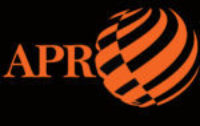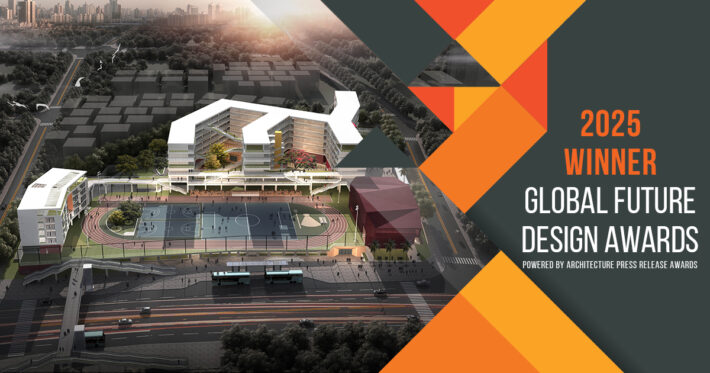Located on the southeast side of the intersection of Guanlan Avenue and Qiantian Road in Fucheng Sub-district, Shenzhen, the Fucheng Campus of Shenzhen Longhua Foreign Languages School is a nine-year school accommodating 54 classes, including 36 for primary school and 18 for middle school. The campus spans a land area of 24,478.25 sqm, with a total construction area of 55,737 sqm.
Global Future Design Awards 2026: Entries Open! Take your work to the next level. Register Now…

Gold 🏆 Winner
Global Future Design Awards 2025
Shenzhen Longhua Foreign Languages School (Fucheng Campus)
Educational Architecture (Under Construction)
Firm
THE INSTITUTE OF ARCHITECTURAL DESIGN & RESEARCH , SHENZHEN UNIVERSITY, CO., LTD.
Architect/Designer
Zhong Zhong, Zhong Botao, Zuo Lilin, Xing Guotao, Li Hongfei, Ye Jianze, Zhong Haihuan, Yang Xiaoying, Hu Jinglan, Wei Qijing, Deng Rixing, Liu Zexing, Liu Mu, Meng Meili, Feng Yewen, Xie Rong, Cao Jiying, Xiong Feng, Liu Zhongping, Wang Weifang, Wang Hongyue, Guo Hao, Li Benchi, Gao Yijun, Tang Jin
Design Team
Zhong Zhong, Zhong Botao, Zuo Lilin, Xing Guotao, Li Hongfei, Ye Jianze, Zhong Haihuan, Yang Xiaoying, Hu Jinglan, Wei Qijing, Deng Rixing, Liu Zexing, Liu Mu, Meng Meili, Feng Yewen, Xie Rong, Cao Jiying, Xiong Feng, Liu Zhongping, Wang Weifang, Wang Hongyue, Guo Hao, Li Benchi, Gao Yijun, Tang Jin
Location
Shenzhen, China
Country
China
Photographer/Copyright
©Langxing Digital Imaging Communication Co., Ltd.
Website
N/A
Instagram
N/A
Facebook
N/A
Whatsapp
N/A
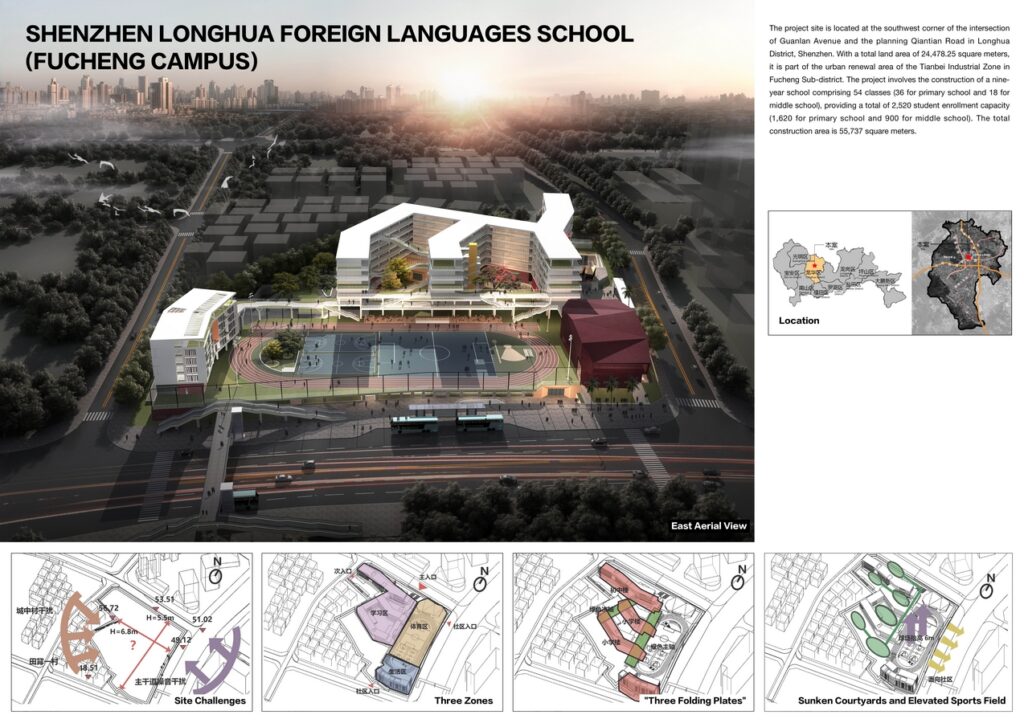
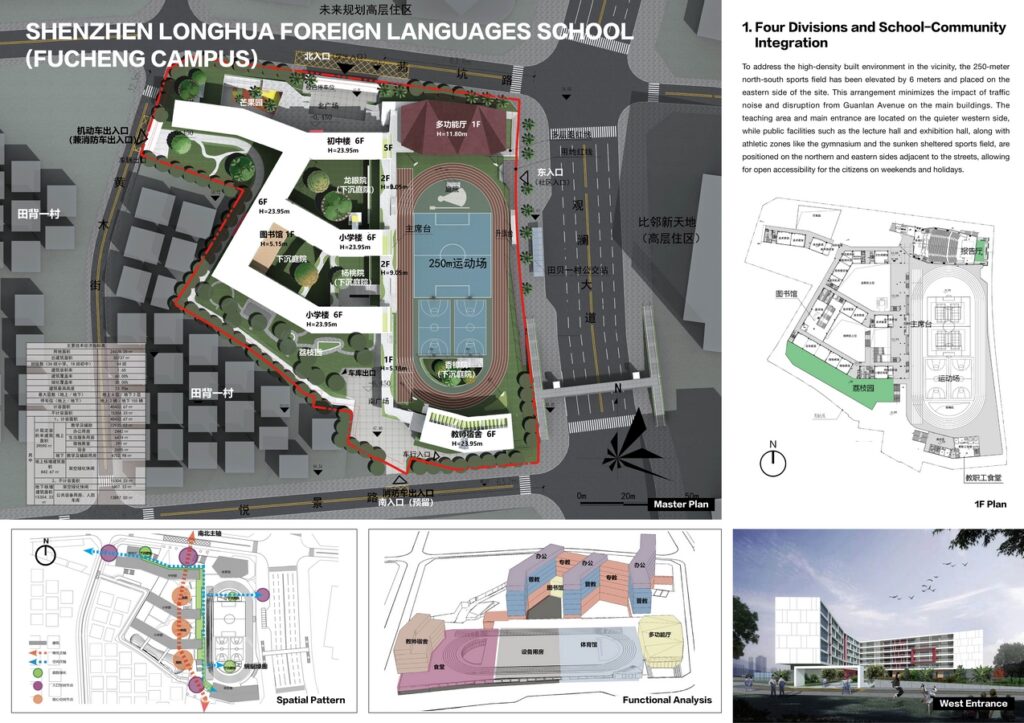
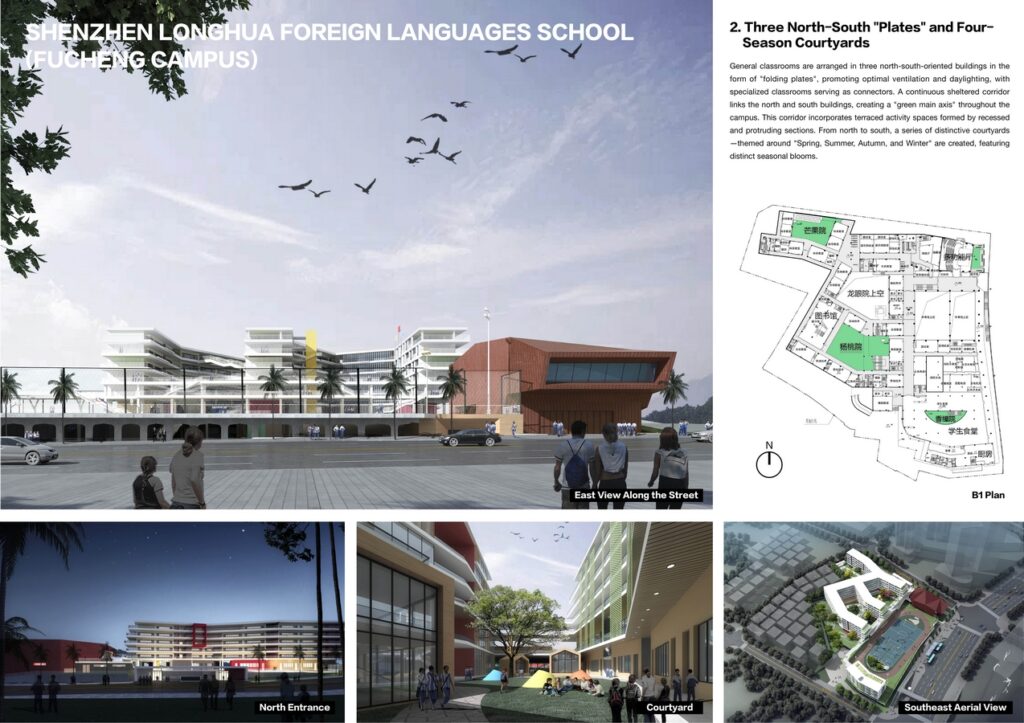

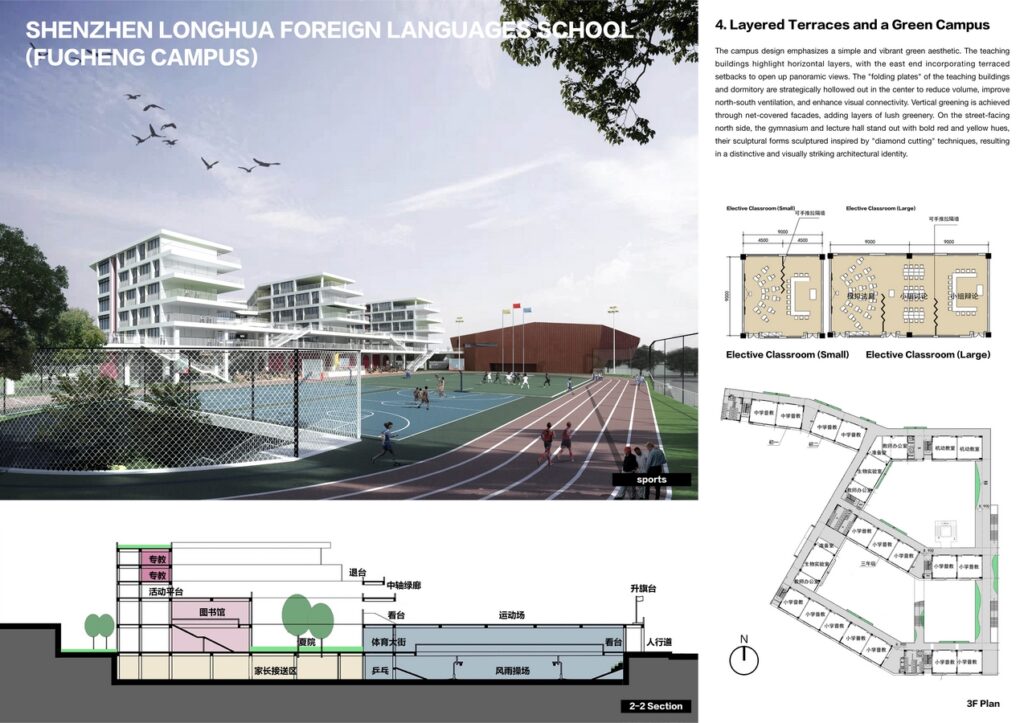
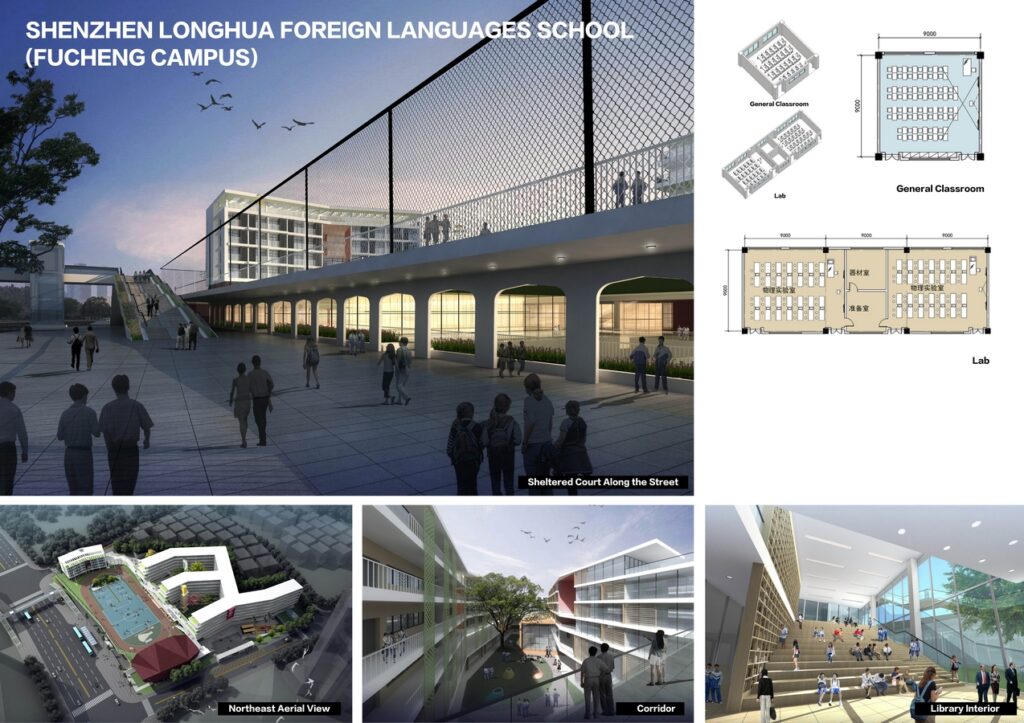
1. Four Divisions and School-Community Integration
To address the high-density environment surrounding the site, the sports field is elevated and placed on the east side to keep the main buildings away from disturbances along Guanlan Avenue. The teaching area and main campus entrance are located on the quieter west side, near the school’s primary residential area and urban villages, with a buffer zone maintained from Tianbei West Village to minimize any potential negative impact.
The teachers’ dormitory and south campus entrance are positioned at the southeast end, avoiding interference from urban villages and facilitating logistics access. Public spaces, such as the lecture hall, exhibition hall, gymnasium, and sheltered court, are situated on the north and east sides facing the street. These facilities are accessible to the community during holidays, forming a dynamic urban interface along Guanlan Avenue. The design incorporates Qilou building-style eaves, providing citizens with shaded and sheltered areas.
2. Three North-South “Plates” and Four-Season Courtyards
General classrooms are arranged in three north-south-oriented buildings in the form of “folding plates”, promoting optimal ventilation and daylighting. Specialized classrooms serving as connectors between these buildings. A continuous sheltered corridor links the north and south buildings, creating a “green main axis” across the campus. This corridor incorporates terraced activity spaces formed by recessed and protruding sections. Given limited external landscape resources, the design focuses on courtyard-style internal landscapes. These courtyards, themed around the four seasons, feature distinct seasonal blooms. The summer and autumn courtyards incorporate playful elements like sloped-roof “fun box” and “trumpet skylight” that connects to the basement, offering diverse, engaging spaces for informal learning.
3. Grouped Layouts and Vertical Design
Same-grade classrooms are grouped on the same floor, with nearby teacher offices and activity platforms forming “grade clusters” to facilitate post-class activities. The vertical design leverages the site terrain’s height differences, setting a semi-underground sports field on the east side to seamlessly integrate into the site. Given the high plot ratio of approximately 1.9, space efficiency is maximized both above and below the ground.
4. Layered Terraces and a Green Campus
The campus design emphasizes a simple and vibrant green aesthetic. The teaching buildings highlight horizontal layers, with terraced setbacks on the east side to open up panoramic views. The “folding plates” of the teaching buildings and dormitory are strategically hollowed out in the center to reduce volume, improve north-south ventilation, and enhance visual connectivity. Vertical greening is achieved through net-covered facades, adding layers of lush greenery. On the street-facing north side, the gymnasium and lecture hall stand out with bold red and yellow hues. Their sculptural forms are inspired by “diamond cutting” techniques, creating a distinctive and visually striking architectural identity.
Follow us on
Instagram: @architecture.pressrelease
Facebook: @APRarchitecturepressrelease
LinkedIn: https://www.linkedin.com/feed/
YouTube: @aprawards
